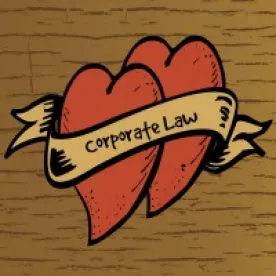A recent United States district court decision on copyright infringement has brought the issue of recreation of tattoos in video games back into the spotlight, and has cast doubt on an earlier ruling from another district court in a different judicial circuit.
The gravamen of the case was the digital depiction of five tattoos on professional wrestler and current WWE champion, Randy Orton, in the “WWE 2K” professional wresting video game series. The plaintiff, tattoo artist Catherine Alexander, filed the lawsuit against the defendants (collectively, “Take-Two”), who develop the WWE 2K video game series and sought to recreate Orton’s tattoos in a digital format. While Take-Two had obtained permission to use Orton’s likeness in the video game, Alexander claimed copyright infringement pursuant to 17 U.S.C., § 501 with respect to Orton’s tattoos, and argued that her consent to include Orton’s tattoos was required, but was not provided. Importantly, Alexander had earlier registered copyrights for each of the tattoos at issue.
Alexander filed a motion for partial summary judgment on the issue of copyrighting, and Take-Two filed its own cross-motion for summary judgment, arguing that Alexander’s copyright claim was insufficient as a matter of law, and requested that the Court dismiss the claim accordingly. Judge Staci Yandle in the US District Court for the Southern District of Illinois (Seventh Circuit) granted Alexander’s motion, but denied Take-Two’s motion.
The Copyright Act of 1976
Alexander’s claims are founded in the Copyright Act of 1976, 17 U.S.C. §§ 101-810, which forms the basis of copyright law in the United States. The Copyright Act protects “original works of authorship,” including, among other mediums, literal works, musical works, sound recordings, multimedia works, and pictorial, graphic, and sculptural works.
Pursuant to this federal statute, copyright infringement occurs when anyone violates the exclusive rights of a copyright owner. A plaintiff must establish two elements to bring a successful claim for copyright infringement. Firstly, the plaintiff must own a valid copyright. Secondly, there must be copying of the constituent elements of the work that are original.
The Court Rules on Summary Judgment
In its decision, the Court first considered Alexander’s motion for summary judgment and the undisputed facts in the case. Because there was no dispute that Alexander held valid copyrights for the tattoos, and that Take-Two copied those tattoos in the WWE 2K video game without her consent, the application of fact to law was straightforward: Alexander satisfied the elements of copyright infringement.
Under the law, if a plaintiff can demonstrate that a defendant has used the plaintiff’s works, the burden of proving that the use was authorized falls on the defendant – in this case, Take Two.
To satisfy this burden of proof, Take-Two’s motion for summary judgment presented three affirmative defenses to justify their use of the tattoos and to demonstrate that such use was authorized. These were: (1) Implied License (2) Fair Use and (3) De Minimis Use.
(1) Implied License
First, Take-Two argued that they had an “implied license” to use the copyrighted work. An implied license exists when three elements are satisfied. The licensee (Orton) must request the creation of the work, the licensor (Alexander) must make that particular work and deliver it to the licensee who requested it, and the licensor (Alexander) must intend that the licensee (Orton) copy and distribute the work.
On the facts at hand, the Court found that there was no dispute as to the satisfaction of the first two elements. Orton had requested the tattoos and Alexander had inked them on his body. In relation to the third element, Take-Two argued that Alexander never told Orton that further use of the tattoos would represent infringement. Thus, Orton subsequently granted WWE a right to license his likeness to third parties and WWE then licensed Take-Two to use Orton’s likeness, including his tattoos, in the video games.
Take-Two’s implied license defense was denied. The Court stated that the question of whether Alexander and Orton had agreed permissible forms of copying the tattoo works or whether any implied license included sublicensing rights was unclear, due in part to conflicting witness testimony. As a result, the evidence raised “a triable issue of fact,” which meant that a favourable ruling on summary judgment was not permitted, and that the matter should be heard before a jury.
(2) Fair Use
The fair use doctrine is an exception to the copyright protections contained in the Copyright Act of 1976, and permits the use of copyrighted material even without permission from the owner. Codified in 17 U.S.C. § 107, the fair use doctrine applies when the use of copyrighted material is done for a limited and transformative purpose, such as to comment upon, criticize, use in news reporting, or teaching and other educational and informative purposes. In other words, the unauthorized use of copyrighted work is “fair” to the extent the defendant changes the copyrighted work or otherwise uses it in a different context such that the work is transformed into a new creation, and whether such use is for a non-profit and educational, rather than commercial, purpose.
The law calls for courts to consider the following four factors when determining the applicability of the doctrine:
- The purpose and character of the use;
- The nature of the copyrighted work;
- The amount and substantiality of the portion used in relation to the copyrighted work as a whole; and
- The effect of the use upon the potential market for or value of the copyrighted work.
At the summary judgment phase, the bar for a successful fair use defense is high, and requires a reasonable trier of fact to reach only one conclusion on the matter. Take-Two fell short of this standard, and the Court found that, on balance, the factors did not weigh in favour of granting the fair use defense as a matter of law on summary judgment. For example, there were material factual disputes between the parties concerning the purpose and character of Take-Two’s use of the tattoos (i.e. whether Take-Two used the tattoos for the same purpose as Alexander created them; to be displayed on Orton’s body), whether the wholesale copying of the tattoos was necessary to further the purpose of Take-Two’s use of portraying Orton’s likeness, and whether the relevant market might stand to be harmed in this instance. The Court did note, however, that the art of creating a tattoo naturally entails a creative and expressive effort, giving tattoos legitimate copyright protections under federal law.
(3) De Minimis Use
Finally, Take-Two argued that the use of the tattoos was trivial and de minimis. The de minimis defense permits the use of copyrighted works if the copying is so minimal that it falls below the threshold of substantial similarity; i.e. the use is too trivial to merit court intervention. Notably, not every federal judicial circuit recognizes this exception to copyright protections.
On this defense, Take-Two stressed that Orton was one of many wrestlers featured in the game, it was difficult to clearly see the tattoos during gameplay, and that the tattoos made up only a minor fraction of the game data.
Once again, Take-Two was unsuccessful. In denying Take-Two’s motion as to this defense, the Court stressed that neither party had submitted any case law or evidence indicating that the Seventh Circuit recognized the de minimis defense. In addition, the Court stressed that previous applications of the defense in other circuits had been successful in allowing copying of small portions of copyrighted works, rather than wholesale copying of works in their entirety, as had occurred in this case.
Conflicting judgment in NBA 2K case
This ruling is particularly striking given a previous lawsuit in which Take-Two was involved, and obtained a clear-cut summary judgment ruling in their favor on similar facts (as reported by our Global IP & Technology Law Blog in April of this year).
In that case, a tattoo company, Solid Oak Sketches LLC, sued for copyright infringement under the Copyright Act 1976 regarding copyrighted material used in the “NBA 2K” video game series. The focus of this lawsuit was the feature of several NBA players’ tattoos in the games. The lawsuit was filed in the United District Court for the Southern District of New York (Second Circuit) in March of this year. Take-Two filed a motion for summary judgment seeking to dismiss the copyright infringement claim and for the Court to further enter judgment in Take-Two’s favor on its de minimis, implied license, and fair use arguments.
Despite the similarities in facts with the lawsuit filed by Alexander in the Southern District of Illinois (Seventh Circuit), the Southern District of New York reached a markedly contrasting decision and granted summary judgment in Take-Two’s favor. It is important to note, however, that the plaintiff in the Southern District of New York lawsuit was not the tattoo artists themselves. In this instance, the plaintiffs were Solid Oak Sketches LLC, a company who were later granted licenses by each of the tattooists.
With respect to the de minimis argument, the Court concluded that no reasonable trier of fact could conclude that the appearance of the tattoos in the game was substantially similar to the tattoo designs themselves. In its analysis, the Court noted that only three out of 400 available players sport the tattoos at issue; that the actual game play is unlikely to include such players; and, even if the video game user does select one of the players at issue, the display of the tattoos is small and indistinct, appearing as rapidly moving visual features in a larger overall game. The Court further noted that the tattoos are not featured in any marketing materials. Accordingly, the Court granted summary judgment on this defense.
The Court also found that the players had implied licenses to use the tattoos as part of their likeness. As in the lawsuit filed by Alexander, the determination came down to the third element; whether the licensor intended that the licensee copy and distribute their work. In this case, the Court concluded that the factual record supported a reasonable inference that the tattoo artists knew that the players, who were never requested nor agreed to limit the display of their tattoos, were likely to appear in public and the media. Therefore, the players had implied licenses to feature the tattoos are part of their likeness, which predated the licenses which the plaintiff obtained.
Finally, and on the issue of fair use, the Court found that a reasonable trier of fact would determine that Take-Two’s use of the tattoos in the video games constituted fair use. The purpose and character of the use was held to be different, as the tattoos were originally inked as a status of expression, whilst Take-Two had copied them for the purpose of authenticity. It was also persuasive that the tattoos featured on only three out of over 400 players in the game and cannot be seen clearly during gameplay, which was also key in establishing Take-Two’s de minimis defense. The nature of the copyrighted work, in contrast to the WWE case, was not deemed to be creative or expressive, as the tattoos contained elements that were copied from designs and pictures that the tattoo artists had not created. This point was supported by declarations from each of the relevant tattooists, which were advanced by Take-Two. The Second Circuit Court also found that there was no evidence that a market for licensing tattoos for use in video games or other media was likely to develop.
Moving forward, these two conflicting summary judgment opinions, on substantially similar facts, may give rise to further differing opinions in how the US federal judicial circuits analyze copyright claims on summary judgment.
This post was written by Simon Watts-Morgan.




 />i
/>i
